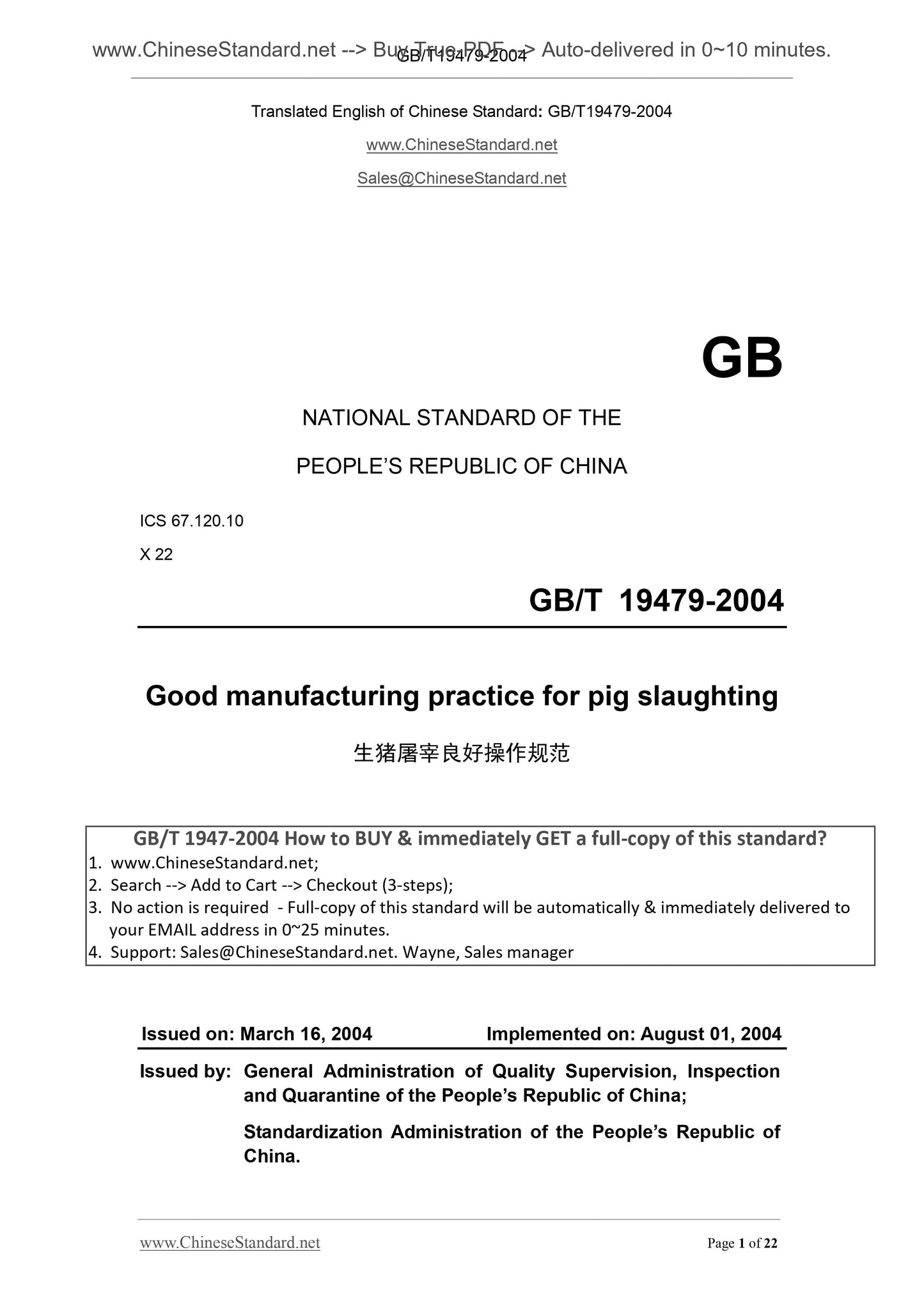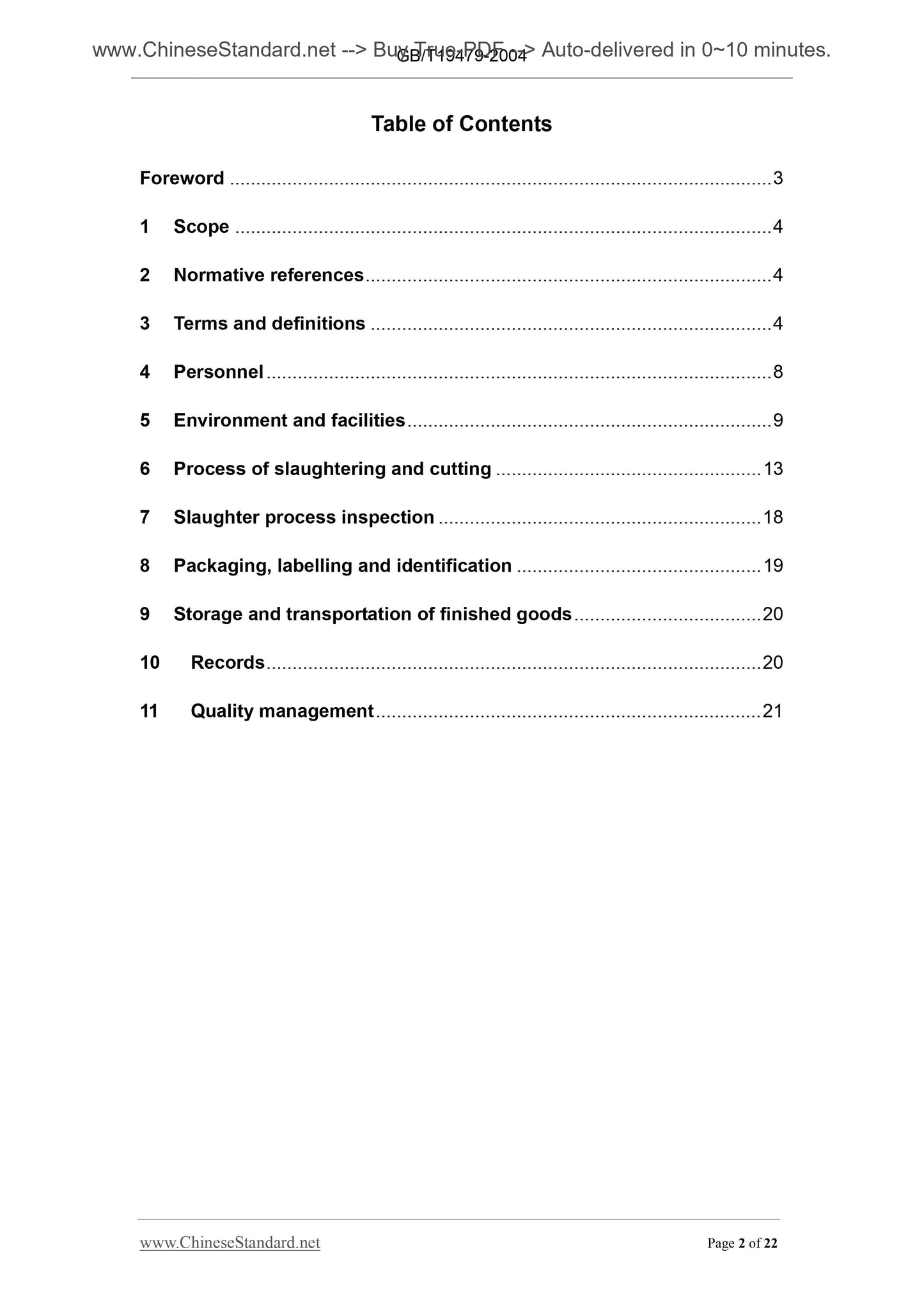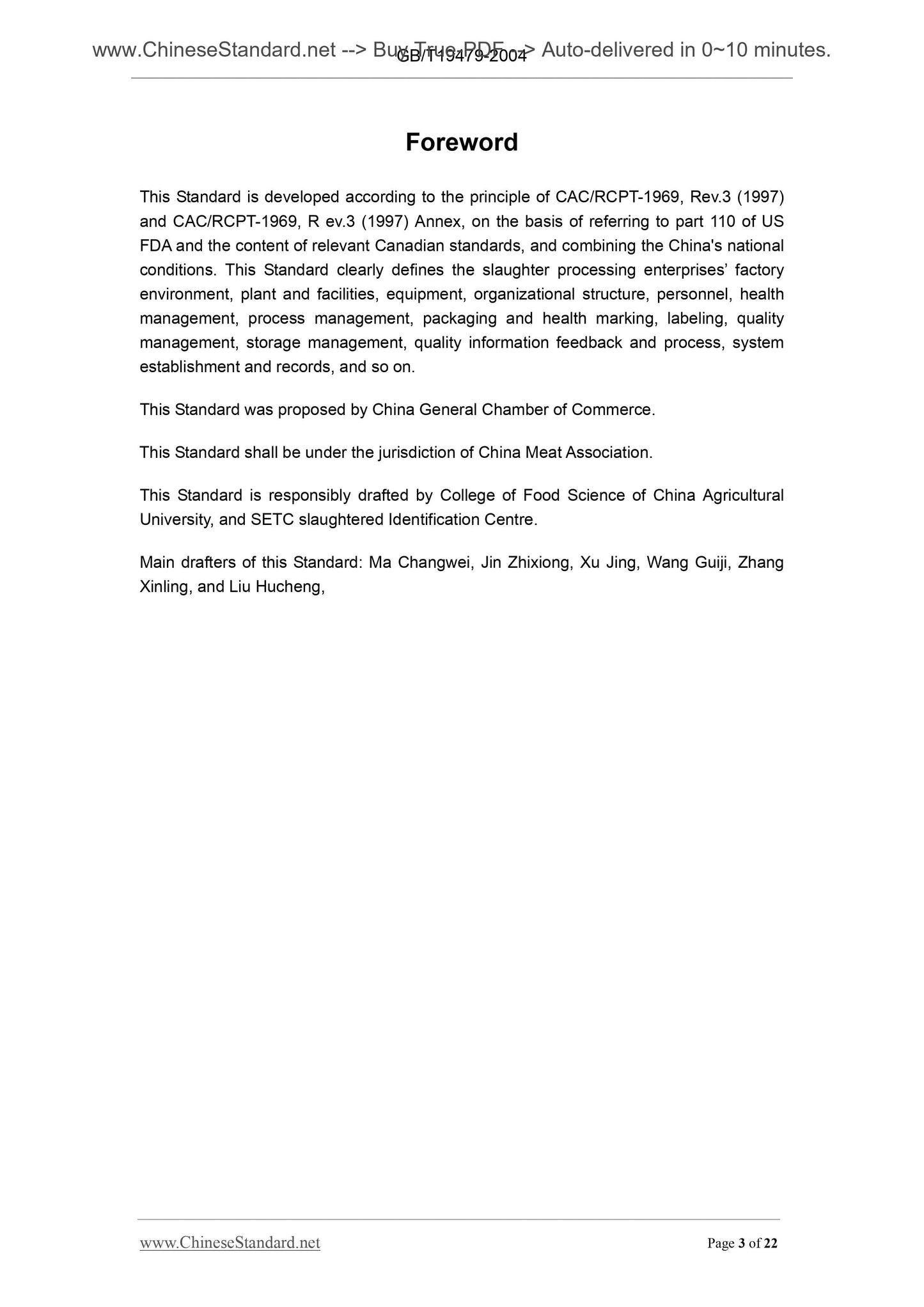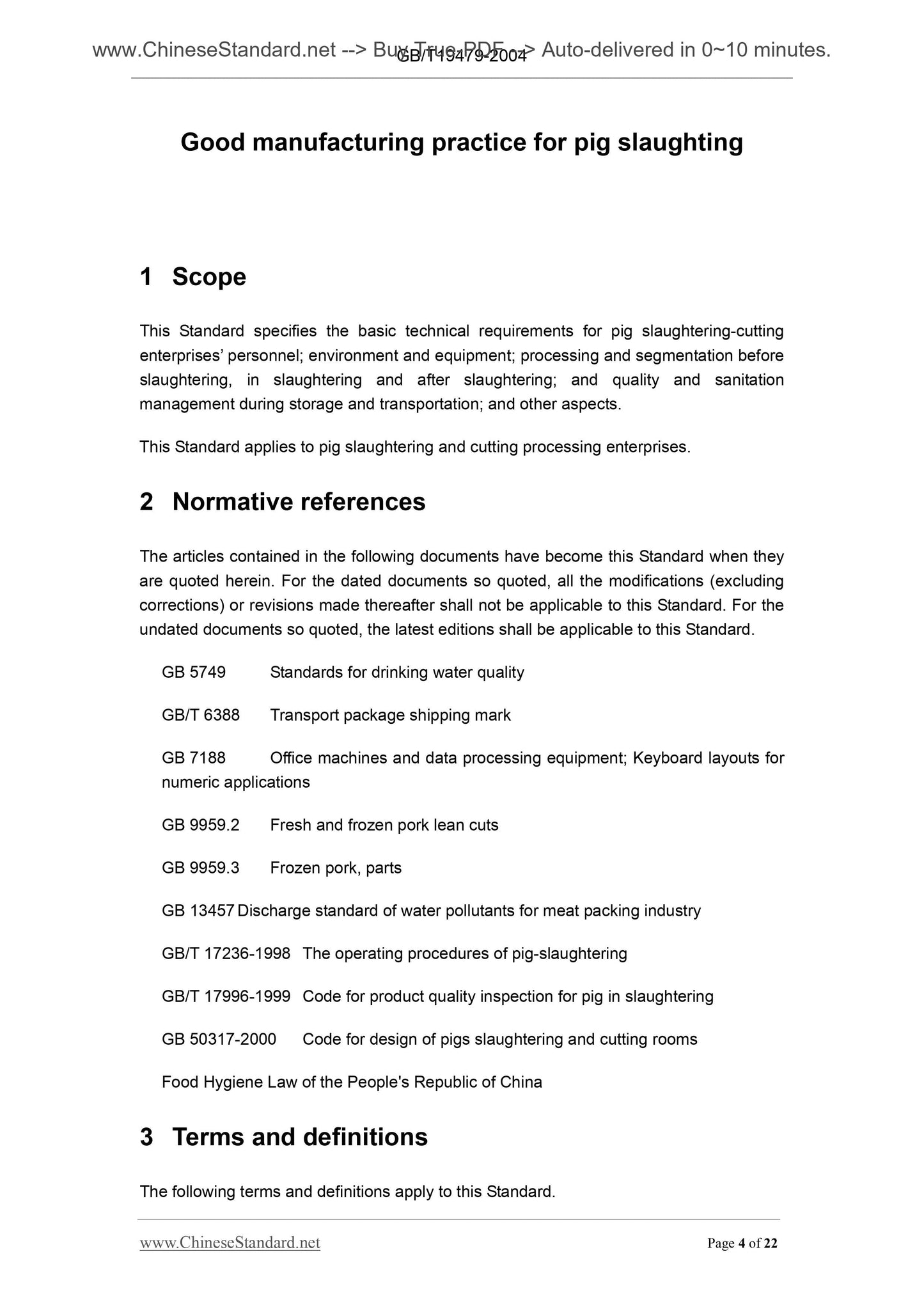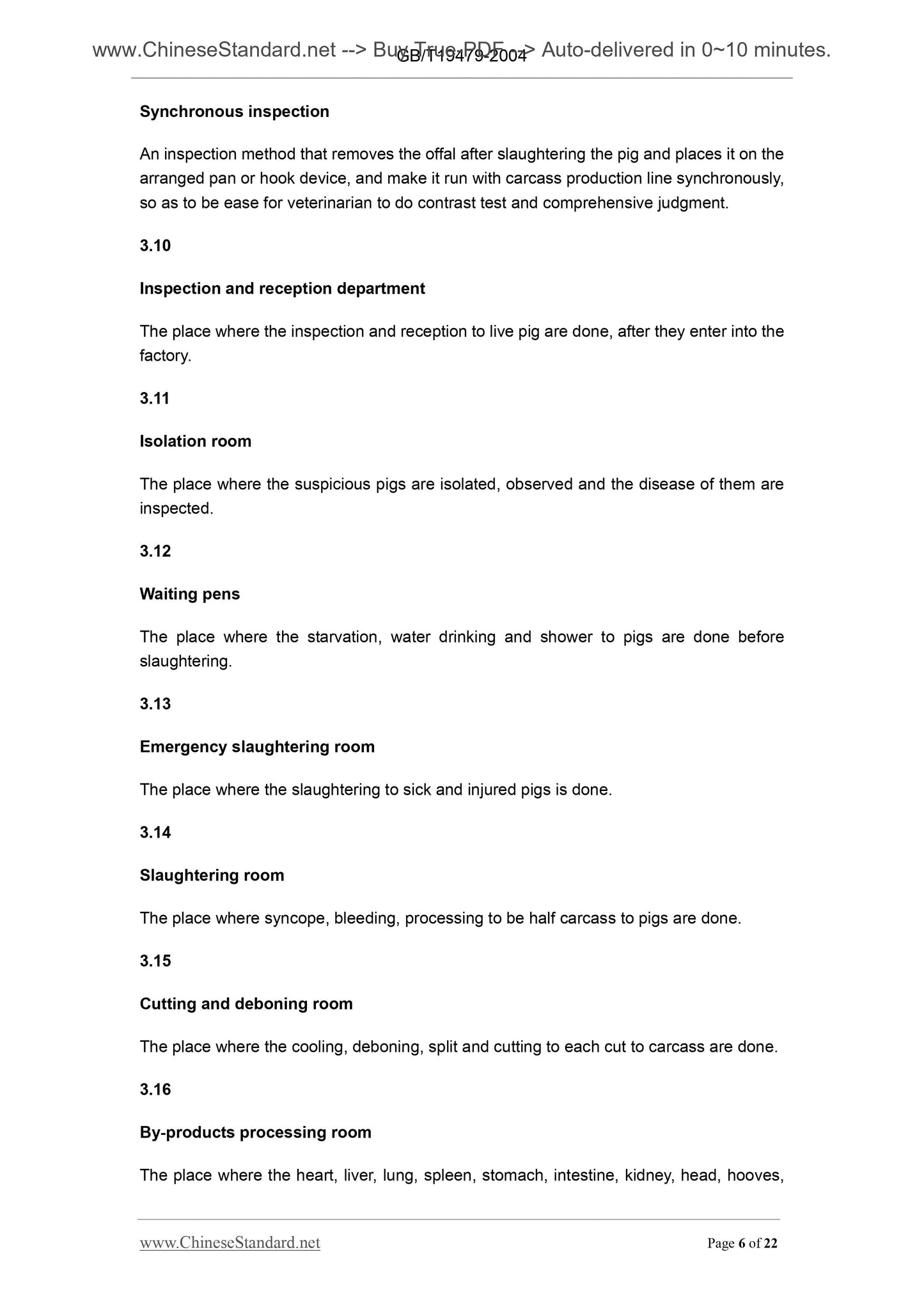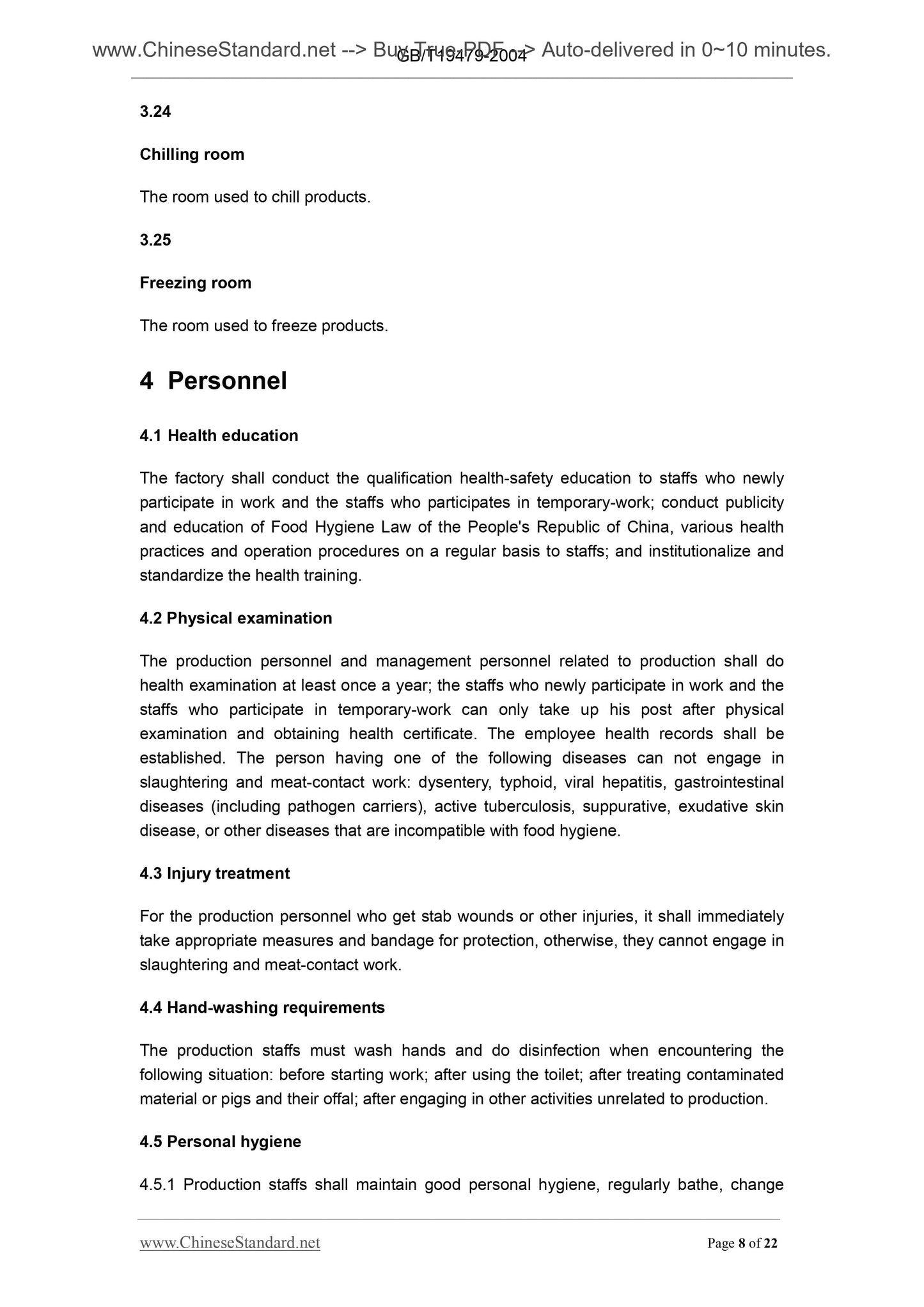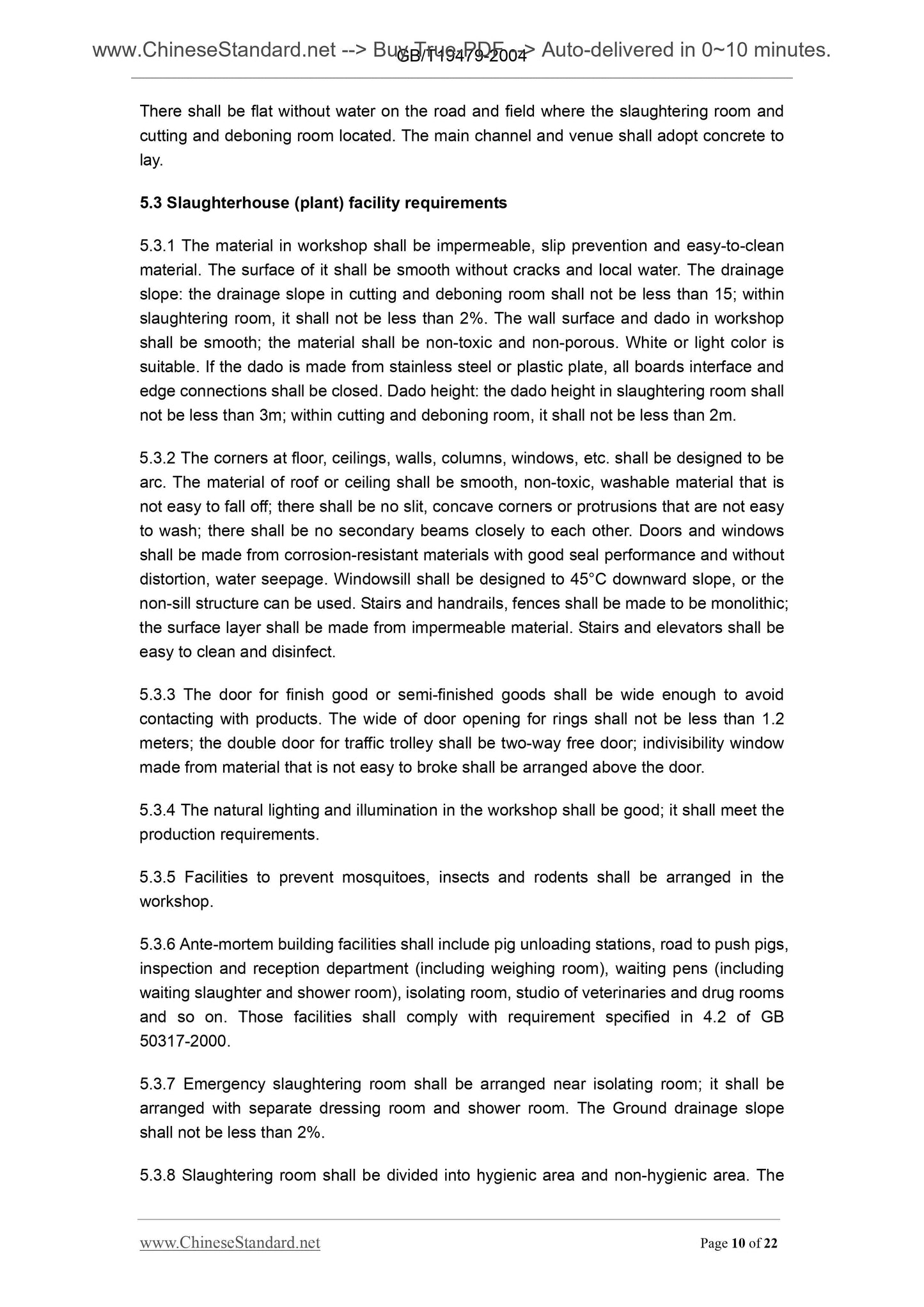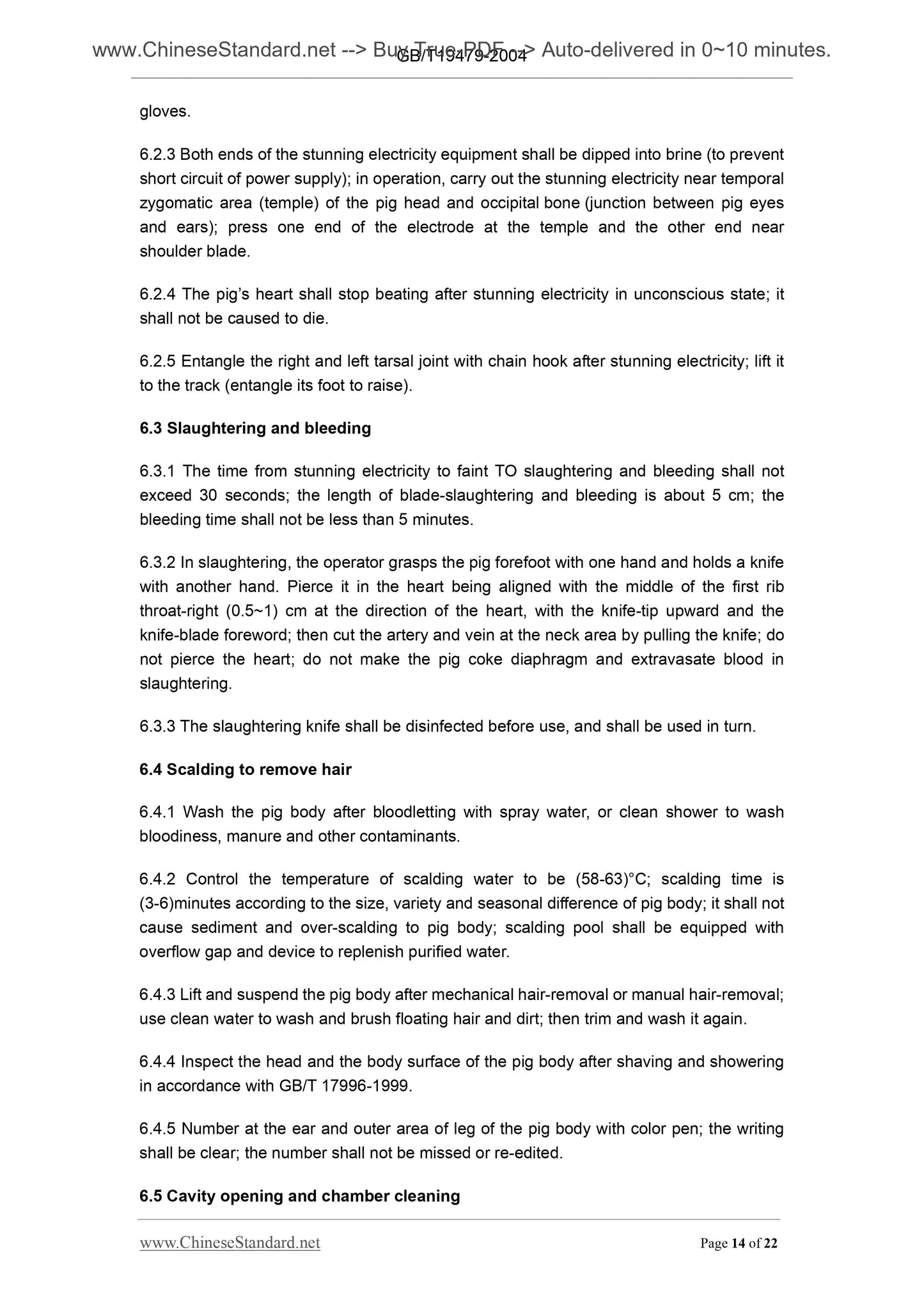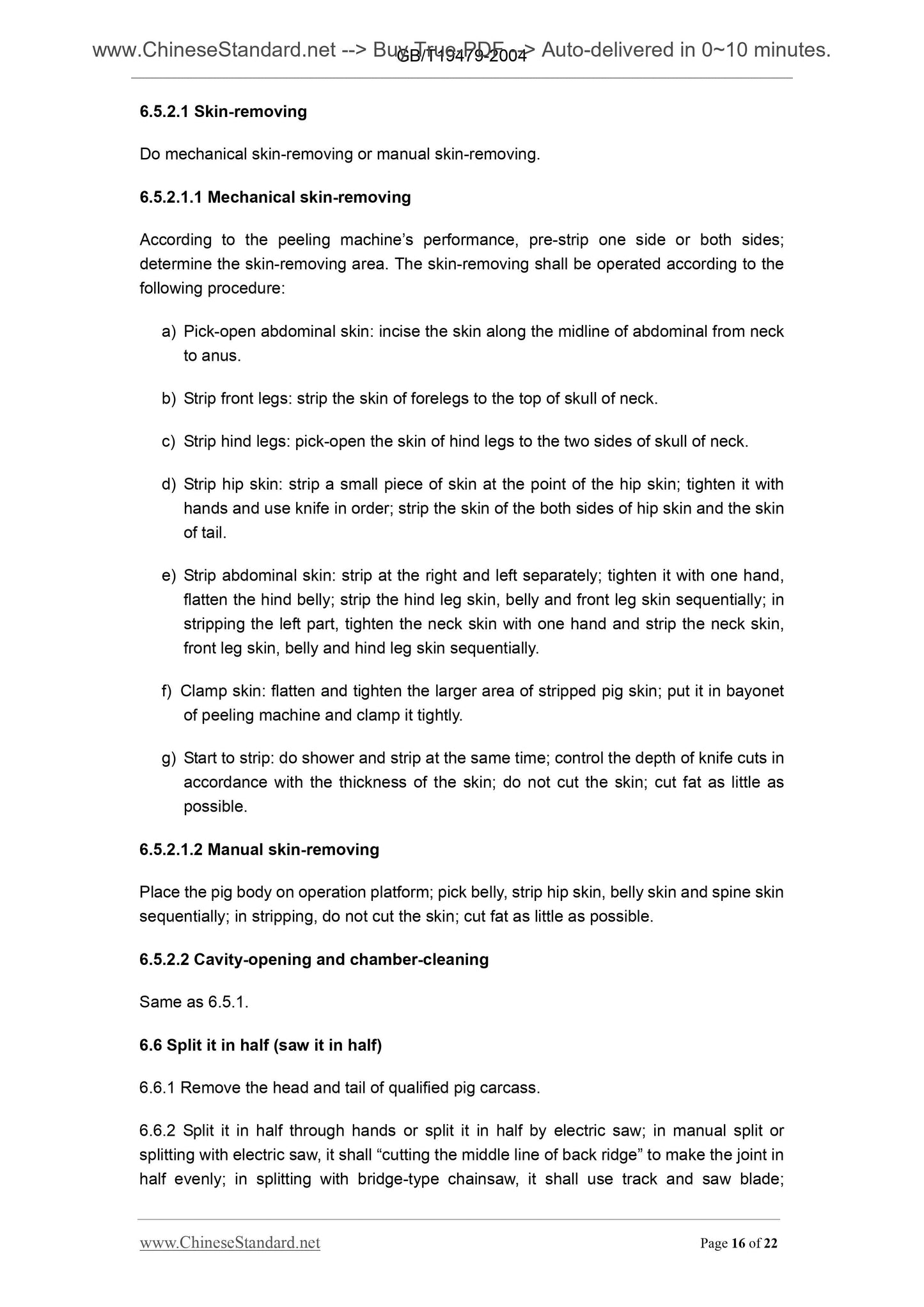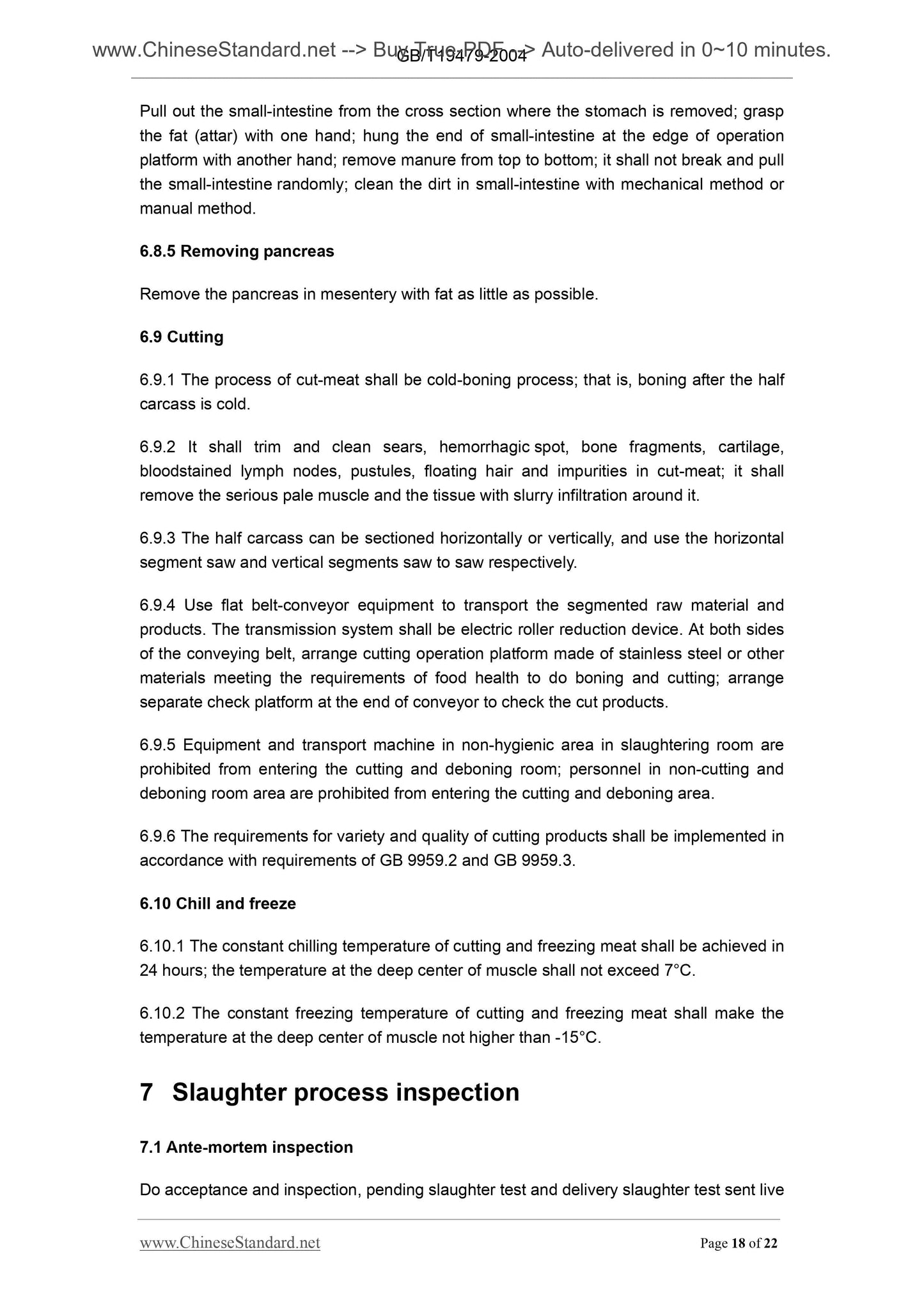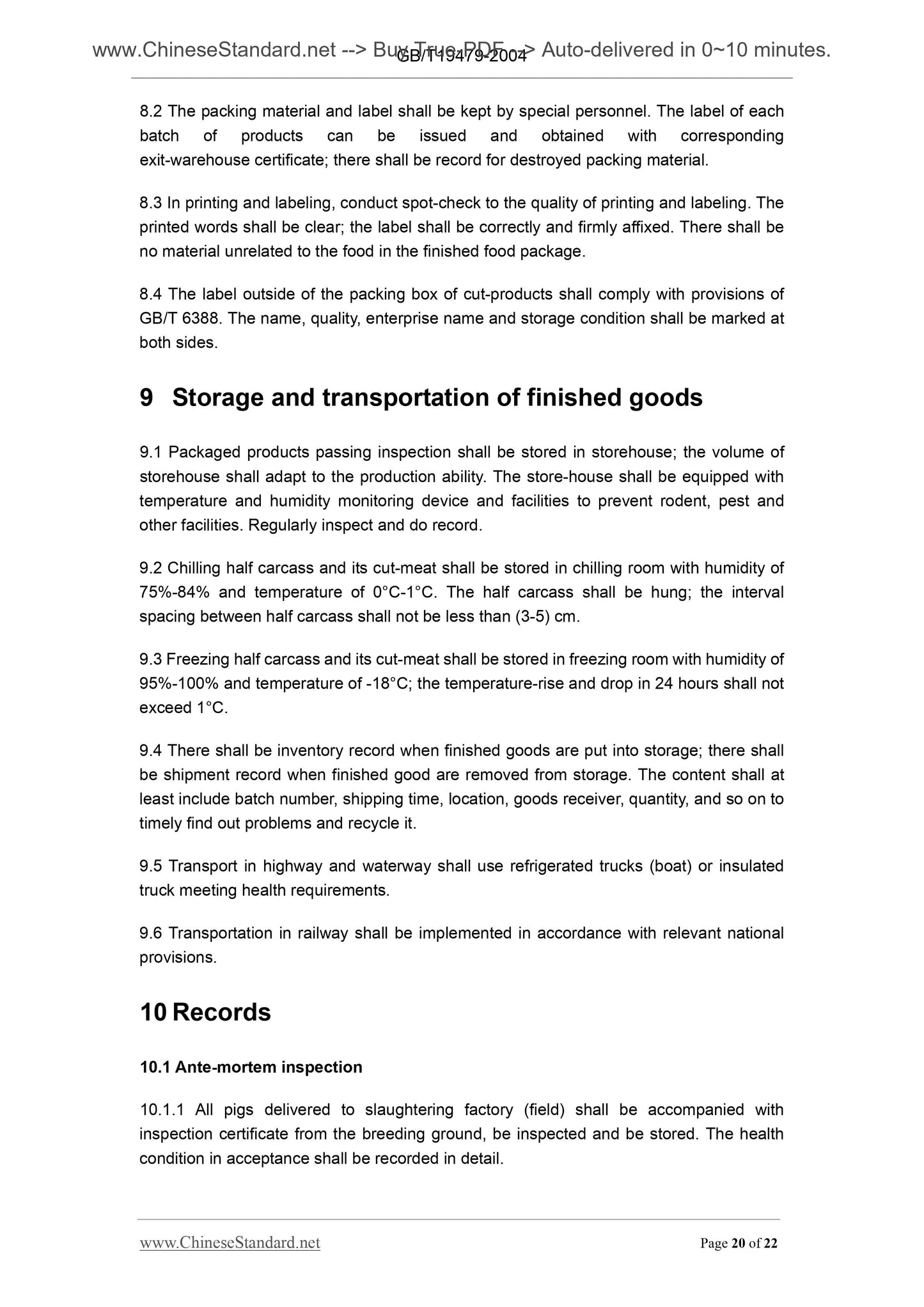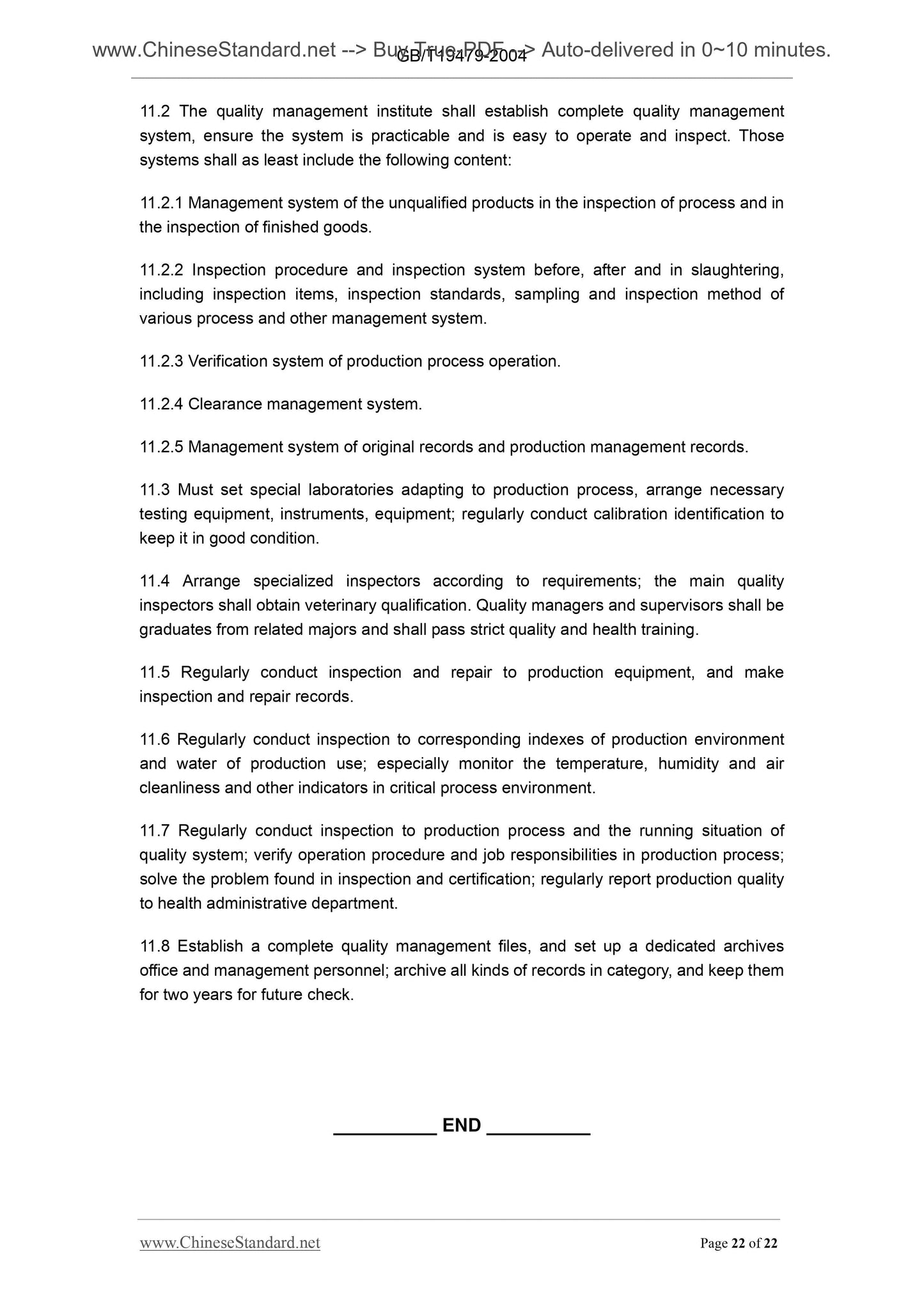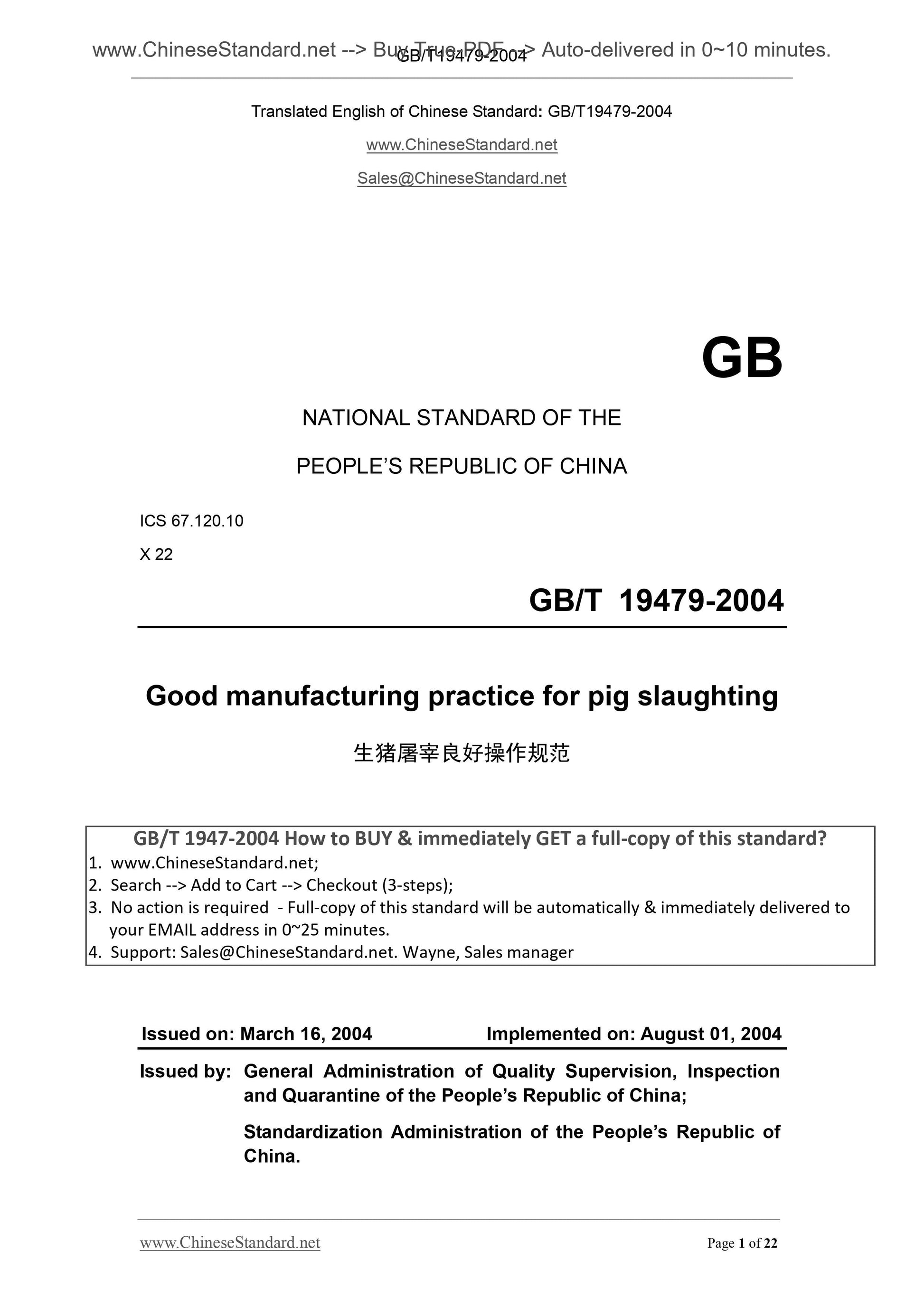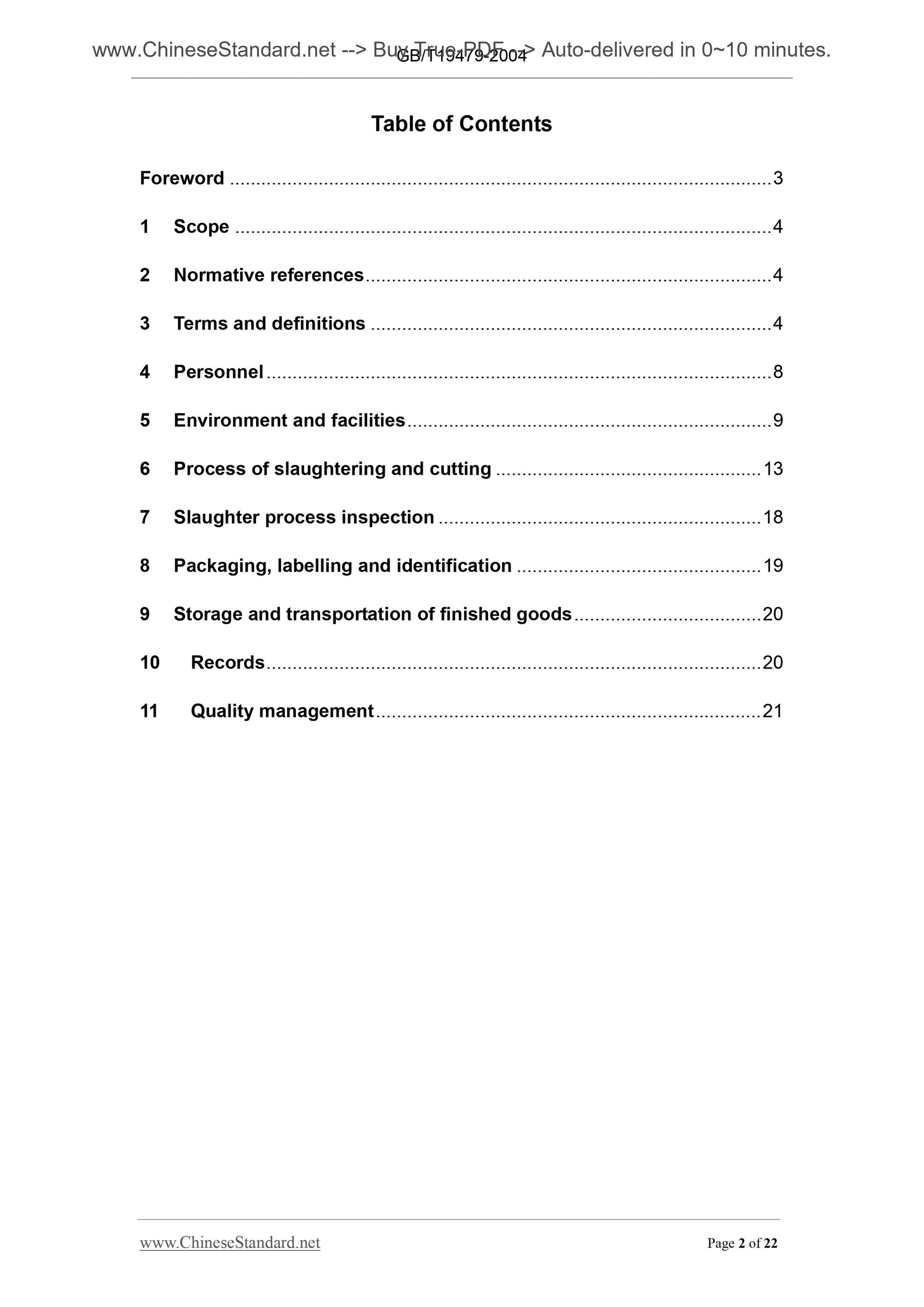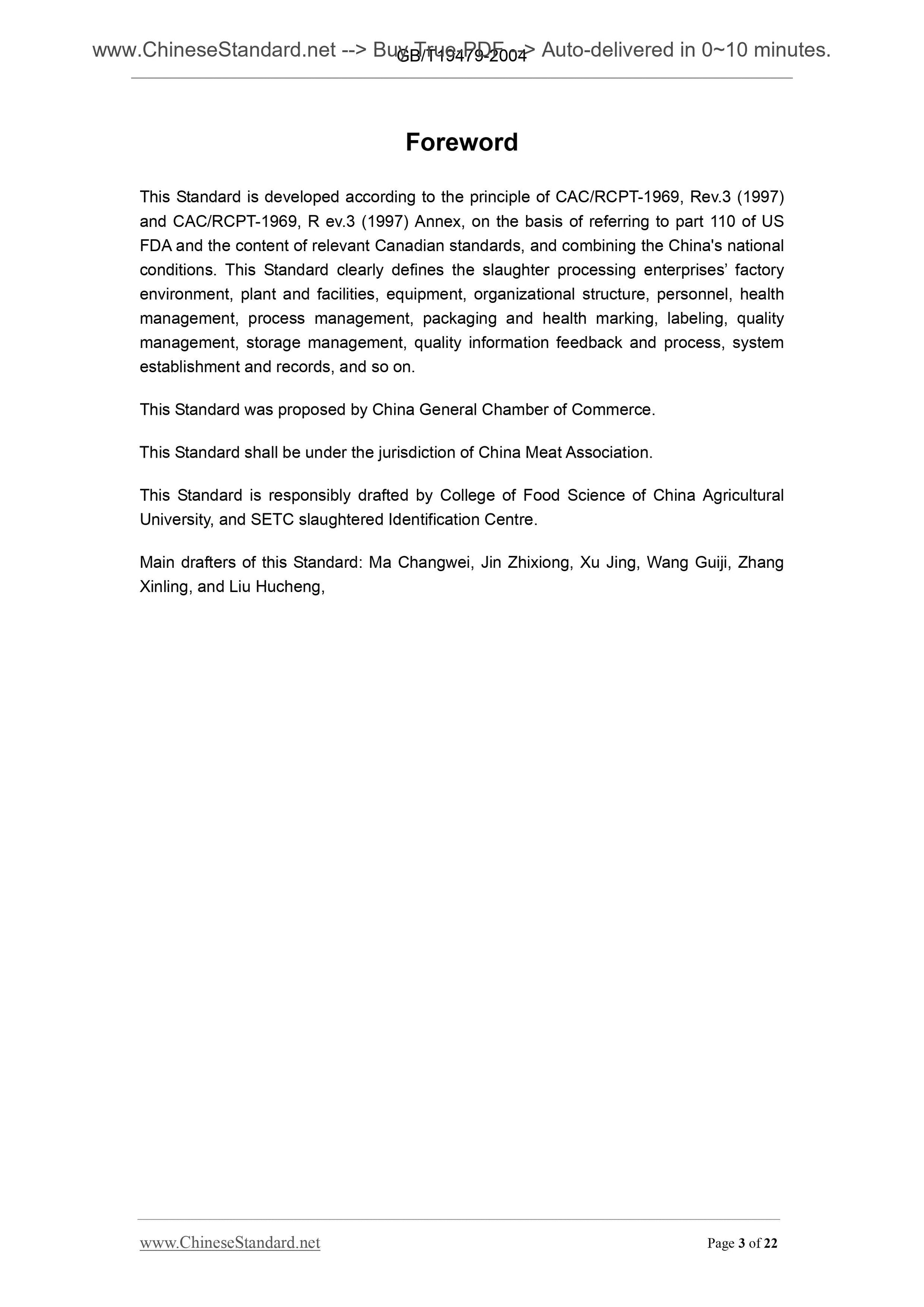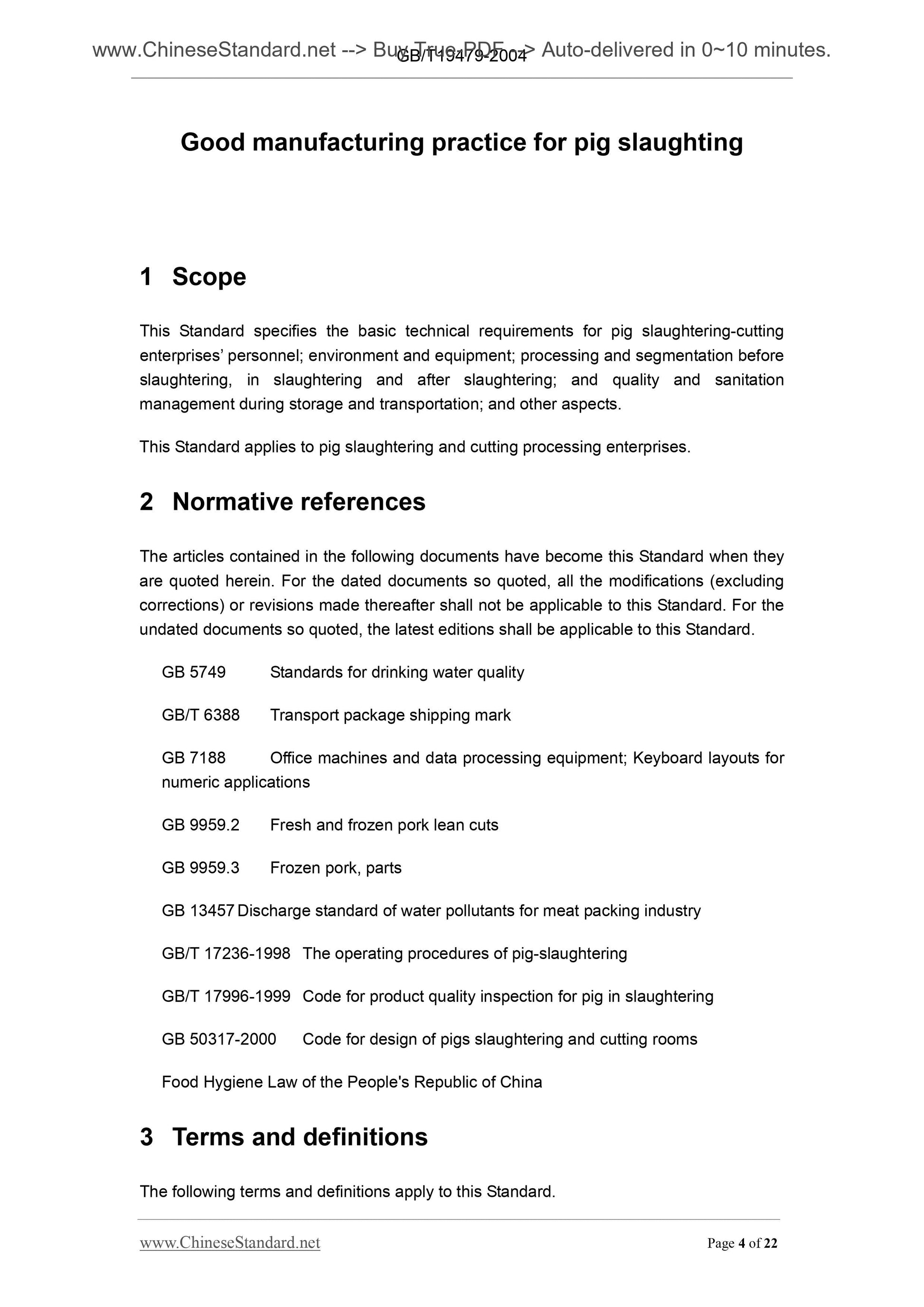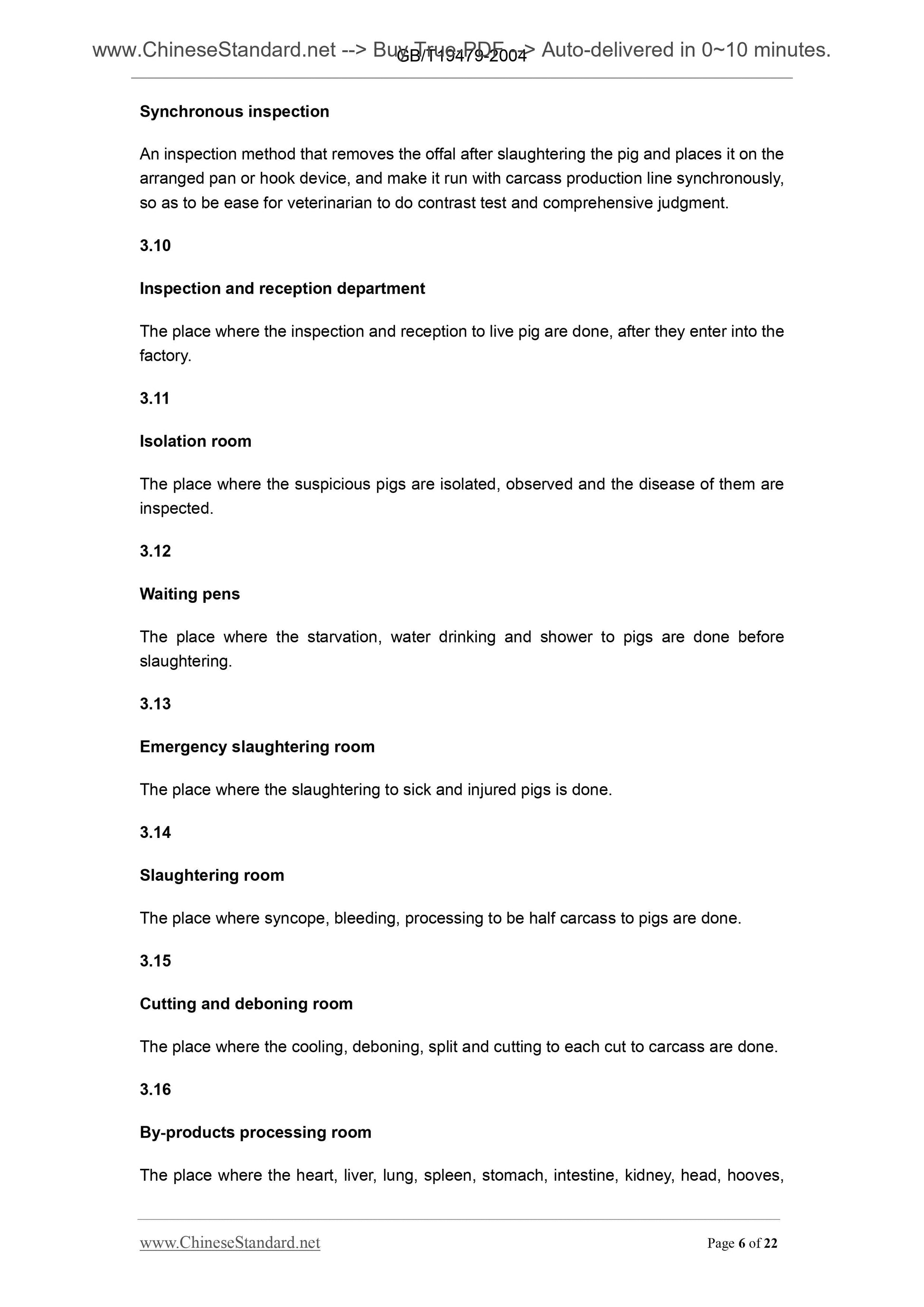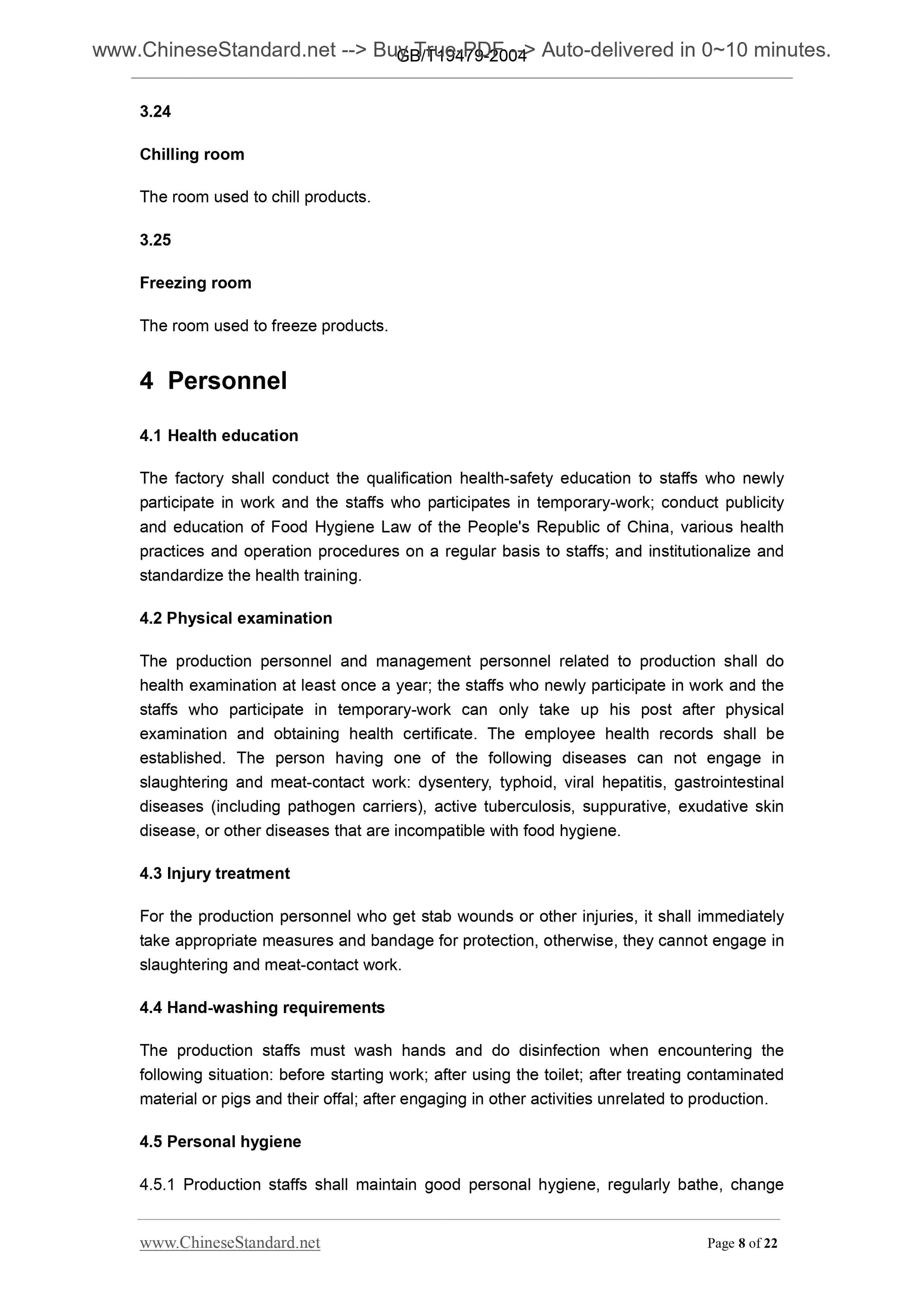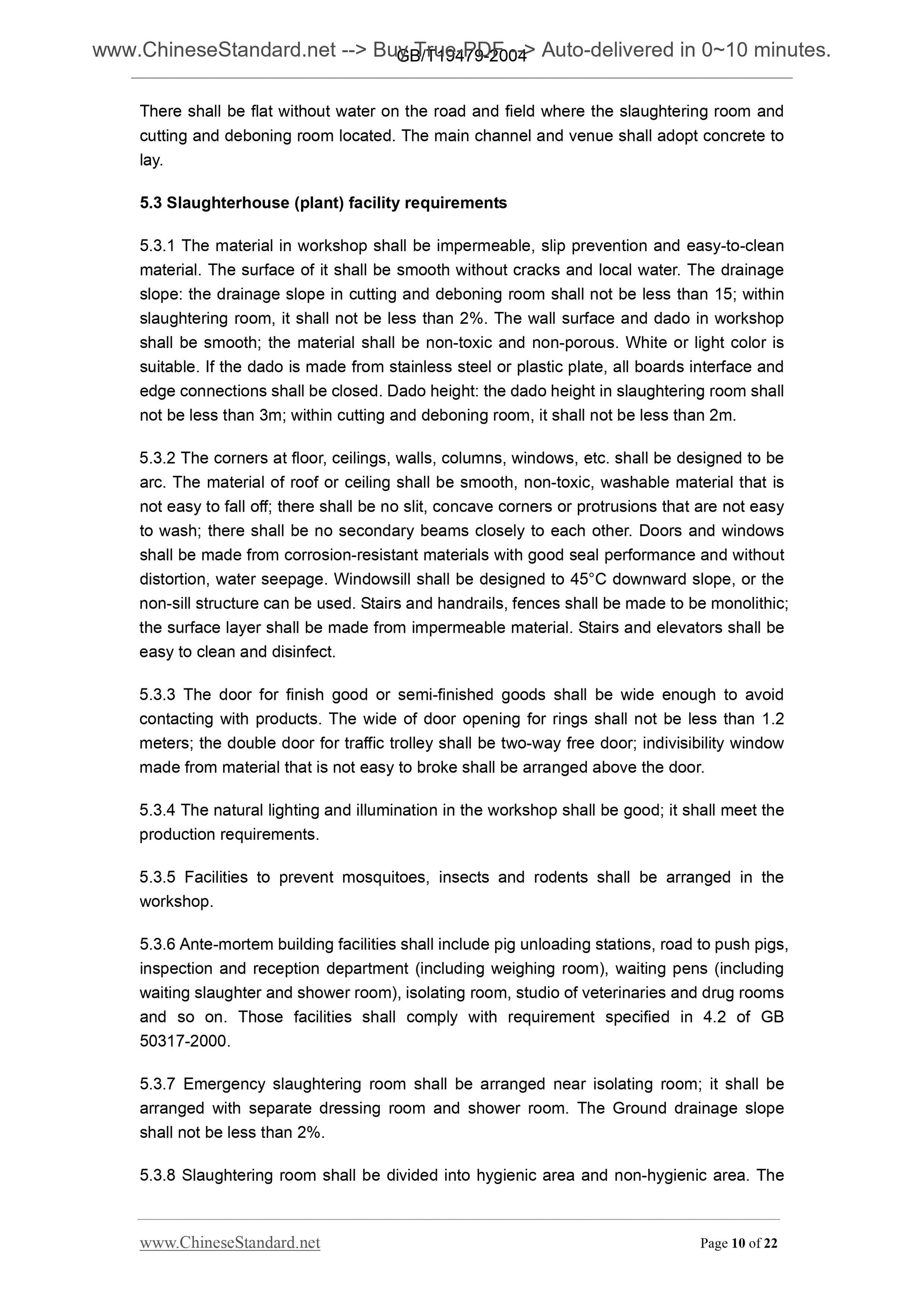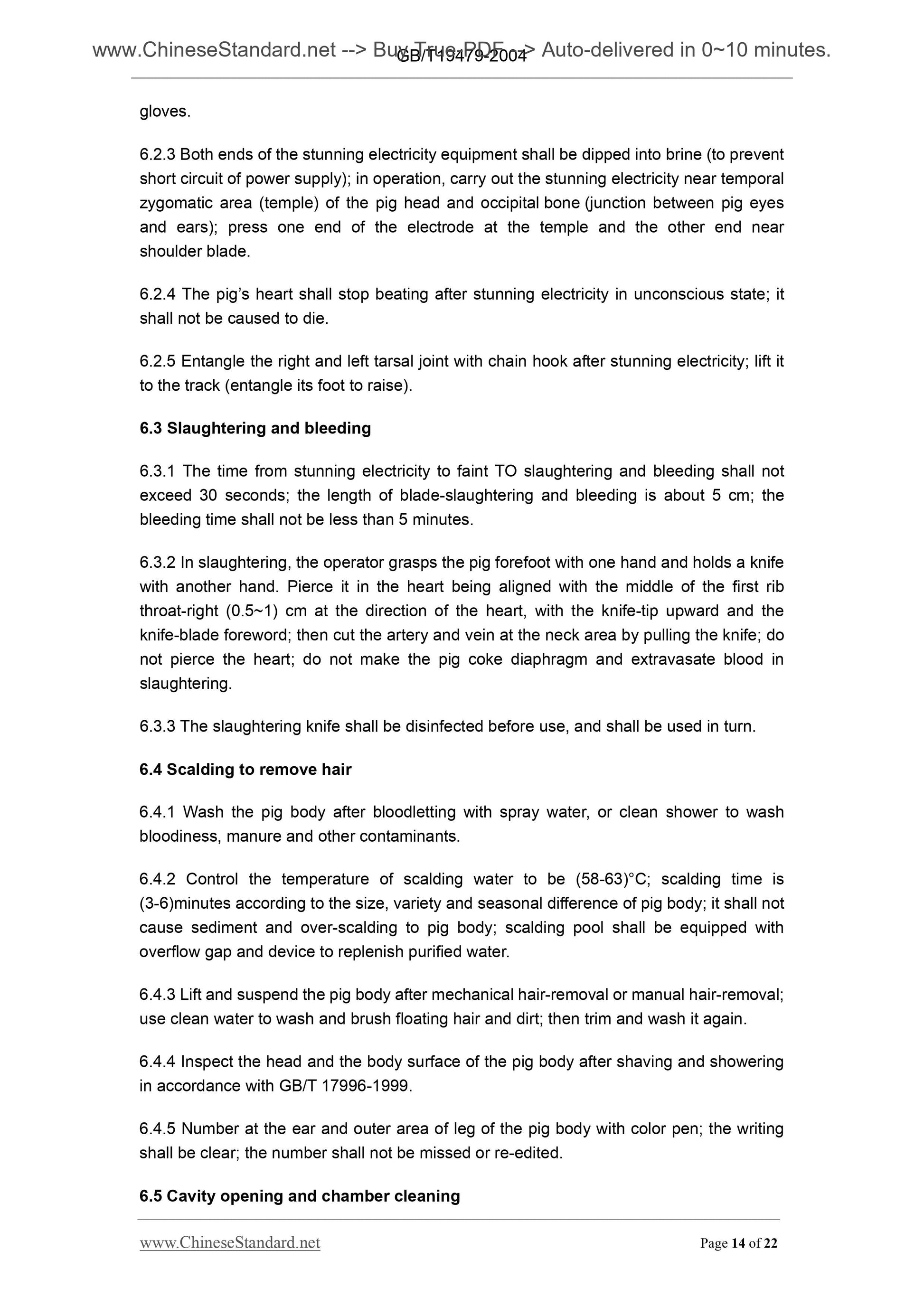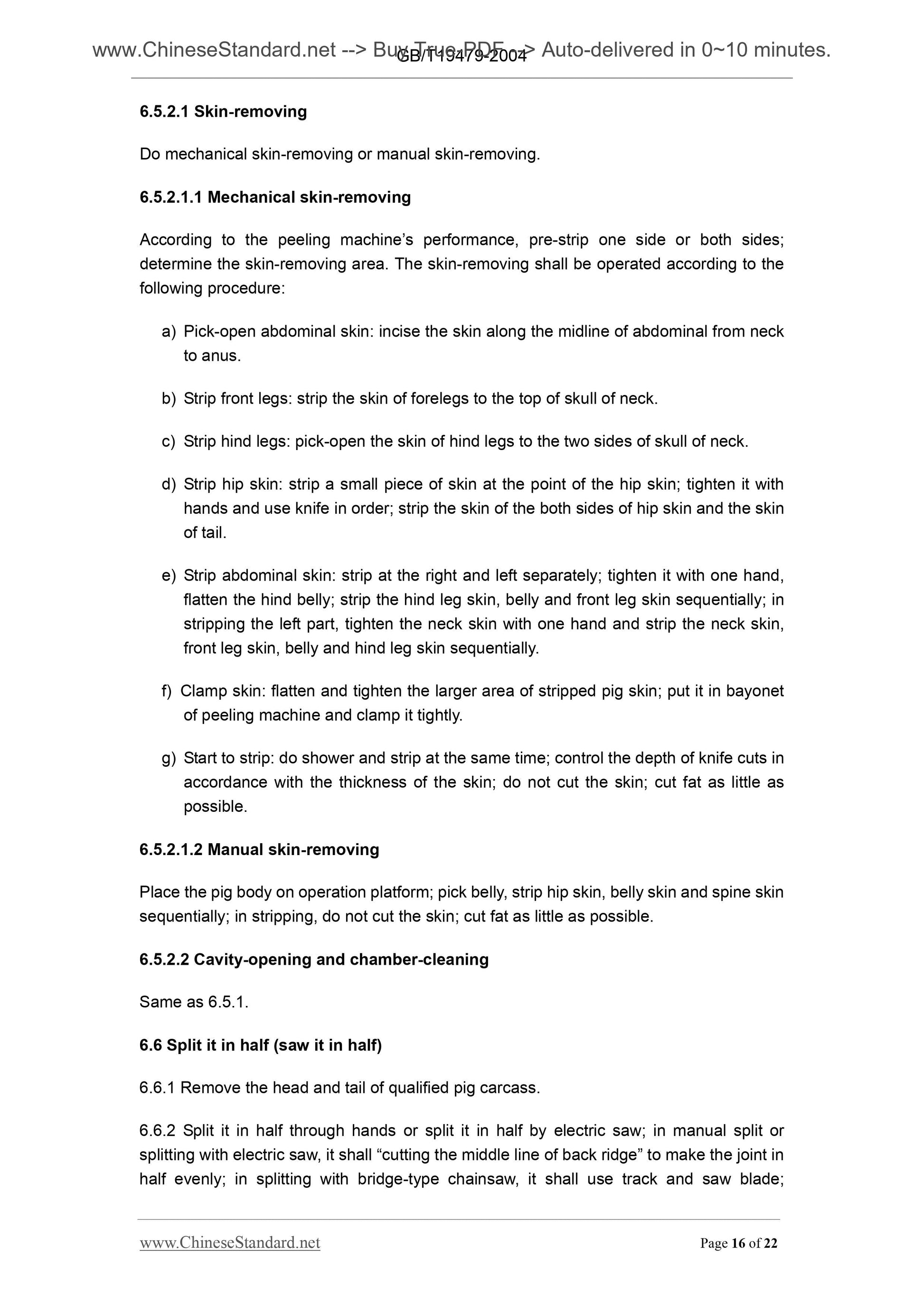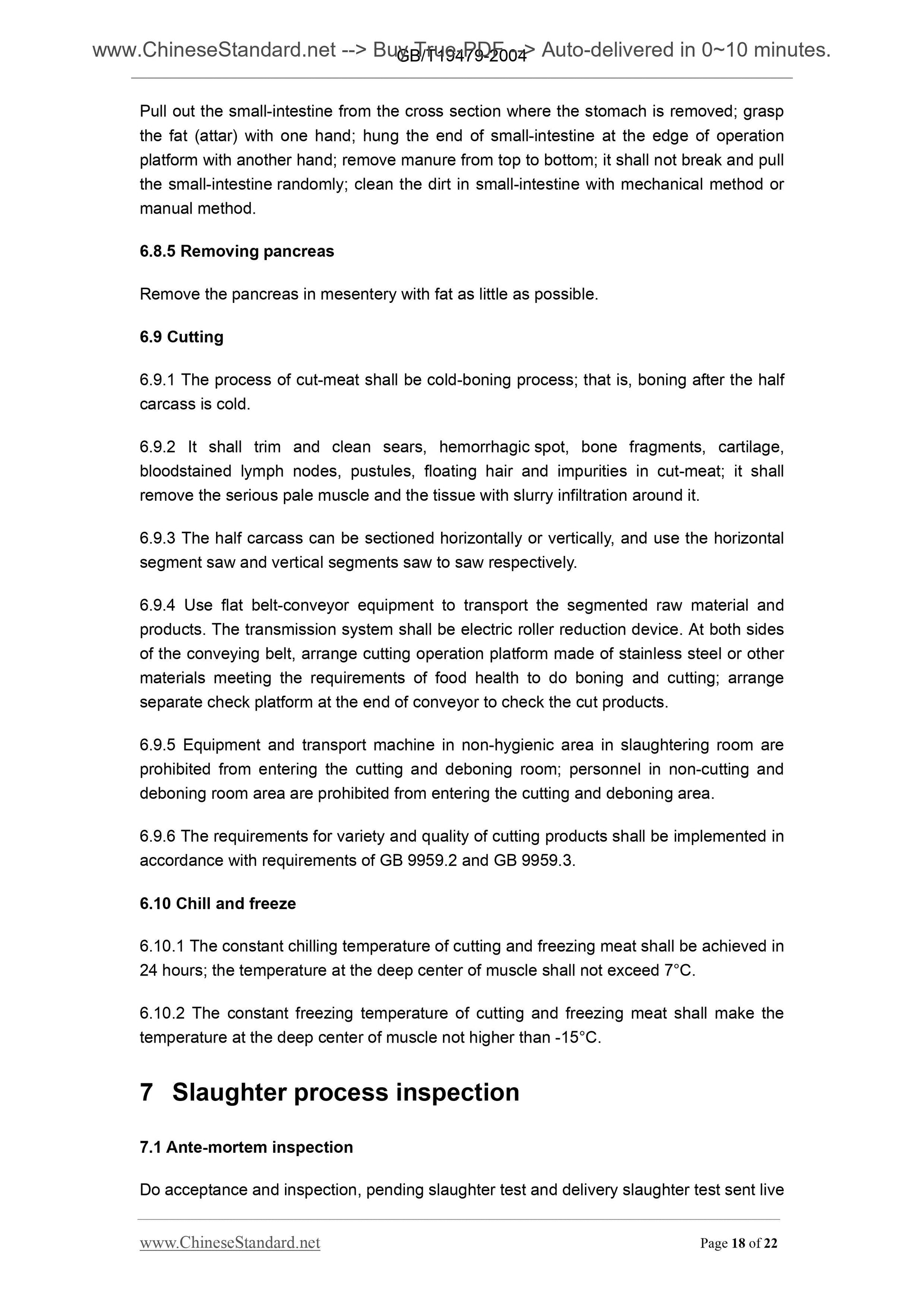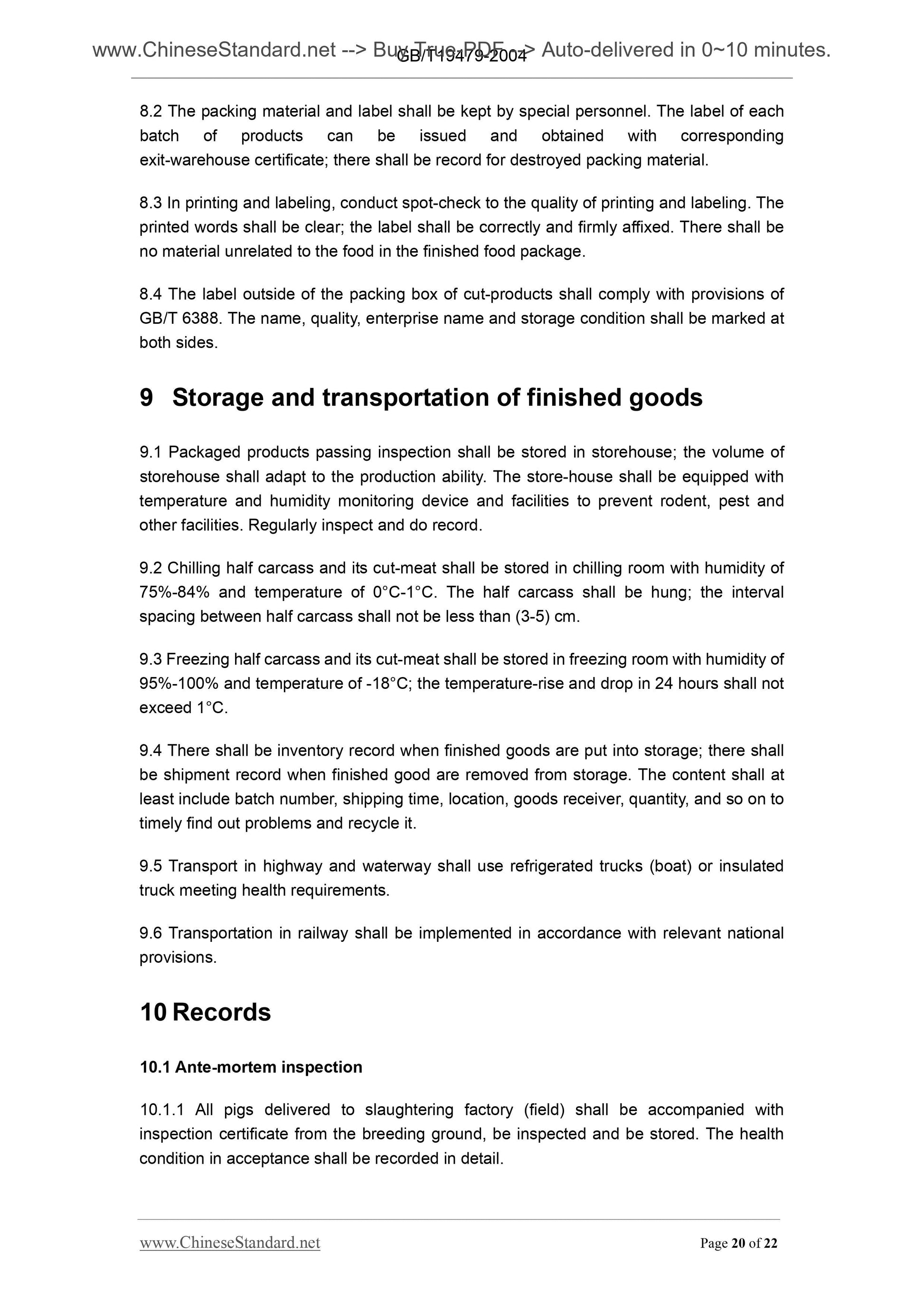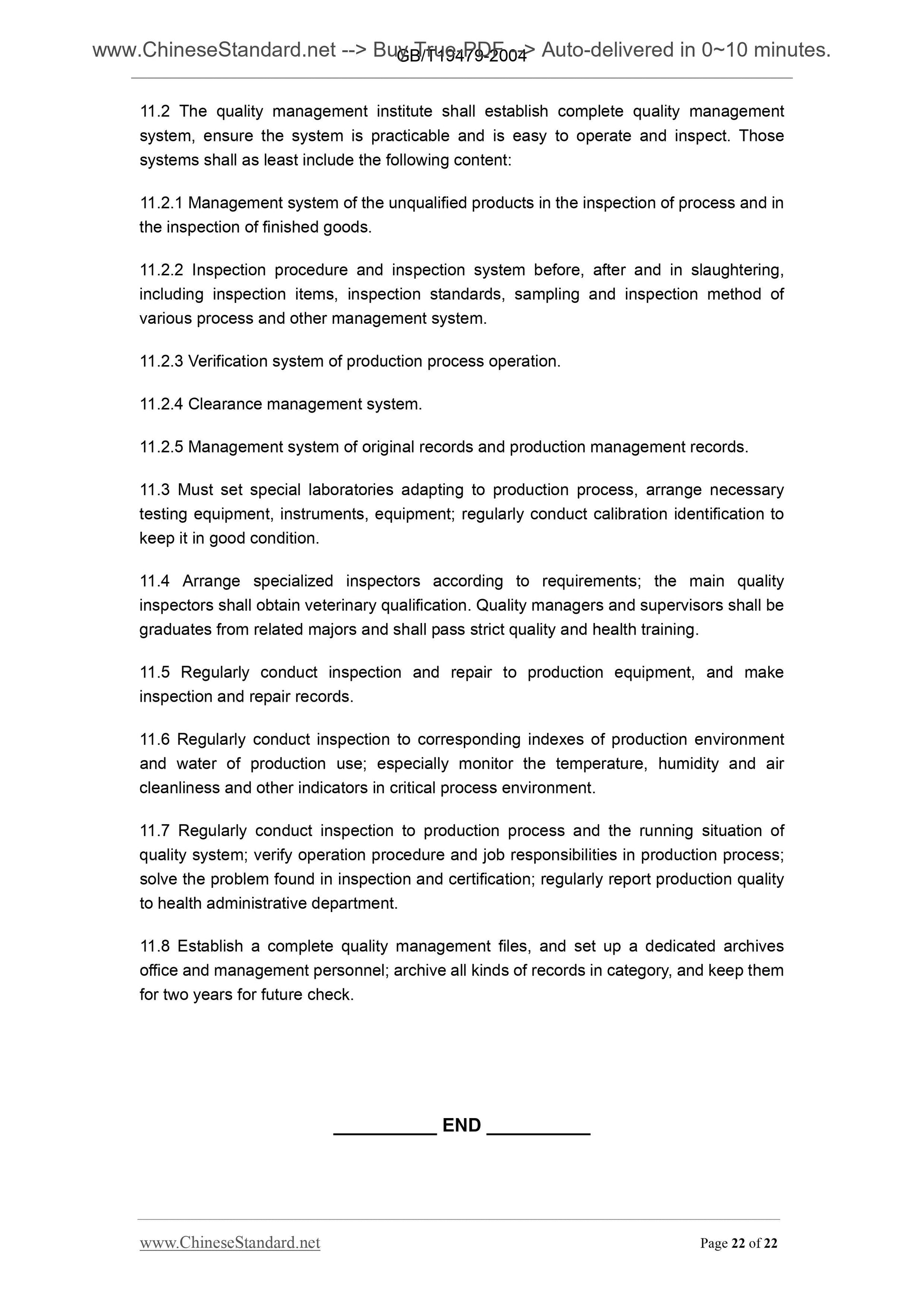1
/
of
12
PayPal, credit cards. Download editable-PDF and invoice in 1 second!
GB/T 19479-2004 English PDF (GB/T19479-2004)
GB/T 19479-2004 English PDF (GB/T19479-2004)
Regular price
$90.00
Regular price
Sale price
$90.00
Unit price
/
per
Shipping calculated at checkout.
Couldn't load pickup availability
GB/T 19479-2004: Good manufacturing practice for pig slaughtering
Delivery: 9 seconds. Download (and Email) true-PDF + Invoice.Get Quotation: Click GB/T 19479-2004 (Self-service in 1-minute)
Newer / historical versions: GB/T 19479-2004
Preview True-PDF
Scope
This Standard specifies the basic technical requirements for pig slaughtering-cuttingenterprises’ personnel; environment and equipment; processing and segmentation before
slaughtering, in slaughtering and after slaughtering; and quality and sanitation
management during storage and transportation; and other aspects.
This Standard applies to pig slaughtering and cutting processing enterprises.
Basic Data
| Standard ID | GB/T 19479-2004 (GB/T19479-2004) |
| Description (Translated English) | Good manufacturing practice for pig slaughting |
| Sector / Industry | National Standard (Recommended) |
| Classification of Chinese Standard | X22 |
| Classification of International Standard | 67.120.10 |
| Word Count Estimation | 12,131 |
| Date of Issue | 2004-03-16 |
| Date of Implementation | 2004-08-01 |
| Adopted Standard | CAC/RCP 1-1969 (1997); NEQ; FDA 21 part110; NEQ |
| Regulation (derived from) | Announcement of Newly Approved National Standards No. 4 of 2004 (No. 66 overall) |
| Issuing agency(ies) | General Administration of Quality Supervision, Inspection and Quarantine of the People Republic of China, China National Standardization Administration Committee |
| Summary | This standard specifies: for pig slaughtering business personnel, environment and facilities, ante-mortem, slaughter, post-mortem processing and segmentation, storage and transportation process quality and lower pay Fortunately pipe monument peers and a special technique to this scribe. This standard applies to: hog slaughtering and processing enterprises division. |
Share
